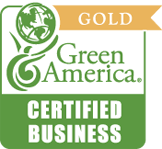Cholesterol 101
Cholesterol: The Good, Bad and the Ugly
Cholesterol is both created by your body and can be ingested through the foods you eat. There is “good” and “bad” cholesterol.
Good Cholesterol (HDL), is considered beneficial because it helps remove LDL cholesterol (“bad” artery clogging cholesterol) from the arteries. HDL carries LDL cholesterol away from the arteries and back to the liver, where it is broken down and passed from the body. Individuals need healthy HDL levels (guide below) to keep their LDL levels in check. Think of HDL as “happy” cholesterol.
Bad Cholesterol (LDL), is harmful because it contributes to plaque that can clog arteries and make them less flexible. Clots can block arteries resulting in heart attack or stroke. Clots can also cause blockages in the arteries that supply blood to the legs (peripheral artery disease) resulting in constant leg pain or even open sores. Peripheral artery disease can also lead to heart attack or stroke. Think of LDL as “lousy” cholesterol.
Triglycerides are a type of fat. This fat stores excess energy (calories consumed) from your diet. While we need to store some energy, storing too much is associated with overweight and obesity, physical inactivity, cigarette smoking, excess alcohol consumption and a diet very high in carbohydrates (more than 60 percent of total calories).
Lp(a) is a type of LDL “lousy” cholesterol. A high level of Lp(a) is a significant risk factor for the premature development of fatty deposits in arteries.
The numbers: (Please note cholesterol in the US is measured in mg/dl, or Milligrams per deciliter)
Total Cholesterol = HDL + LDL + 20% of Triglyceride levels. Individuals should aim for levels below 180 – 200 (sources vary on the exact number). 200-239 is considered borderline high. Above 240 is considered high risk.
HDL “happy” cholesterol for men should be 40 and above and for women should be 50 and above. 60 and above is considered ideal for both sexes. As for LDL “lousy” cholesterol…
Individuals are said to be well at below 100; still ok with levels below 129; borderline high from 130-159; high at 160 – 189 and very high when above 190.
Triglycerides are said to be normal when they are less than 150; borderline high when they are between 150 to 199; high when they are between 200 to 499 and very high when they are more than 500
How to improve your numbers:
- Exercise helps to increase HDL “happy” cholesterol
- To lower your LDL and triglycerides
- Quit smoking
- Exercise
- Eat more fruits and vegetables, fish, and fiber, less carbohydrates, processed foods, and saturated fat
- Consider medication
Note: The American Heart Association recommends that individuals 20 years of age and older have their levels checked every 4-6 years.







